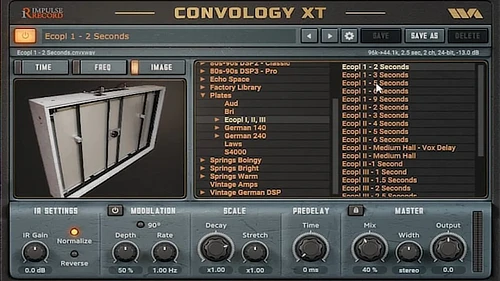The Sony DPS-R7 is a top-tier digital reverb unit that incorporates Sony’s advanced digital and audio technology. It follows in the footsteps of the well-received Sony DRE-2000, and Sony MU-R201 earning high praise from users.
Quality-conscious design – A/D and D/A high performance converter
The Sony DPS-R7 converts the incoming analogue signal to a digital signal, passes it through various effects, then re-converts it to an analogue signal before output. The determinant to the sound quality is the conversion mechanism that adopts the 18-bit oversampling stereo A/D converter and the pulse D/A converter of 40.96 MHz. These account for highly accurate, less deteriorated effects.
User-friendly and comfortable operation
The large size backlit LCD of 40 characters by 2 lines makes it possible to proceed with smooth operation while viewing the operating condition in real time. Moreover, the LCD display incorporates an on-line manual (in English) which displays information required for operation.
Abundant preset memory settings
The unit has a hundred variations of the effects created by musicians, sound mixers and acoustic engineers around the world in its preset memory. This will help you select and replay immediately the desired effects for a particular purpose.
Sound creation of any kind
The EDIT function allows you to modify the presets or to create some individual effects. Besides the preset memory for a hundred effects. the unit has a so-called user memory where you can save up to 256 affects you are going to create. Using this memory allows more varicoloured play of effects.
Wide range of effects
The Sony DPS-R7 consists mainly of a reverberation block together with an input block, a pre-effect block, a post-effect block and an output block for signal processing. For Processing signals with stereo-input/stereo-output in the reverberation block, one of 5 types of ST-ST algorithms is available, while the monaural-input/stereo-output processing allows you to take any two types of MONO-ST algorithm.
One of the six types of algorithms can be used in the pre-effect block and one of seven in the post-effect block. By combining these blocks and algorithms used in the blocks, a wide range of effects will be able to be created according to the input source.
Remote control
The remote commander (not supplied) makes it possible to remotely control the Sony DPS-R7.
2 types of I/O connectors are provided
The Sony DPS-R7 has XLR connectors (balanced-type) and phone jacks so that it can be connected to instruments, recording equipment or PA (public address) equipment.
Linkage with MIDI equipment
The MIDI device incorporated in the Sony DPS-R7 can receive program change signals from another MIDI equipment connected so that the Sony DPS-R7 can be controlled by the MIDI equipment connected. Thus, it can function as an effector when connected to digital instruments. In addition, controls from PCs or MIDI sequencers are very helpful for composition.










One Response
How much did this unit lust for?